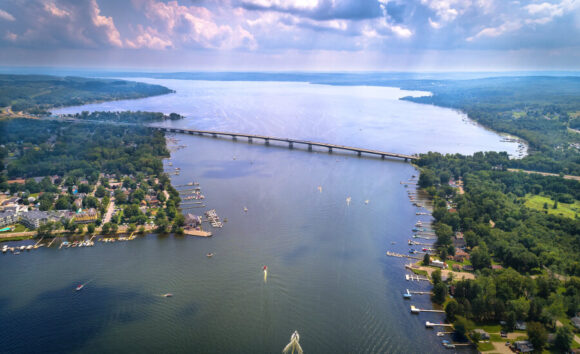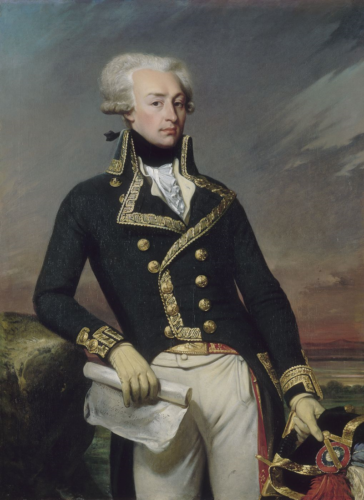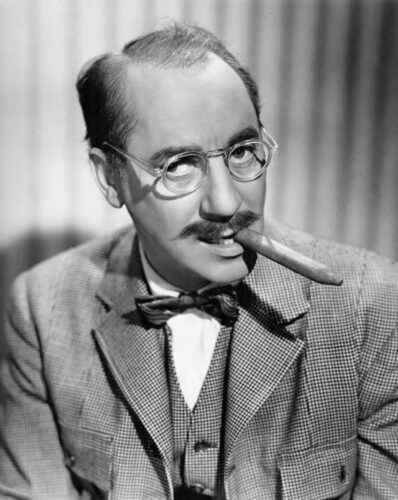There are several events in American history for which I will always recall where I was, and what I was doing, on those dates. I just added the Jan. 6, 2021 violent attack on the Capitol by domestic terrorists, provoked by a defeated president at the end of his term, to my personal list of infamous events.
Given the above, I decided to reconfirm my values; and so I am looking inward in this essay, which is a tribute to a unique small town. Please bear with me as I share my nostalgia.
I grew up in Fredonia, N.Y., a college town that sits in the midst of New York’ s western lakes district (my own geographic description). My hometown is less than an hour from three lakes, each of which contributed to my developing world view and sense of history.
Three Lakes

The first, Chautauqua Lake gave rise, late in the 19th century, to the “Chautauqua Movement”, which became a national forum for discussion of public issues, international relations, literature, and science. William Jennings Bryan, Booker T. Washington, Susan B. Anthony, and Amelia Earhart have all spoken there.
President Franklin Delano Roosevelt delivered his historic “I hate war” speech at Chautauqua on Aug. 14, 1936: “I have seen war on land and sea. I have seen blood running from the wounded. I have seen men coughing out their gassed lungs. I have seen the dead in the mud. I have seen children starving. I have seen the agony of mothers and wives. I hate war”.
The second, Cassadaga Lake, was home to the Lily Dale Assembly, which was a camp and meeting place for Spiritualists and “Freethinkers”. The purpose of the Assembly was to further the science, philosophy, and religion of Spiritualism.
Finally, the third, Lake Erie, produced a generation of environmentalists and ecologists. My experience on its shores began with kayaks, small sailboats, and water skiing. However, in my last summers before leaving for University, the lake was declared “dead” and inaccessible for recreational use.
Erie was surrounded by agriculture and dairy herds. Its waters became overloaded with nutrients from fertilizer runoff, cattle manure, and poorly managed waste water. Its warm waters became a breeding ground for bacteria that contaminated drinking water and created oxygen-deprived “dead zones” that destroyed the fresh water fishing industry.
This disaster, coupled with several other similar disasters across the United States, like the June, 1969 oil slick fire on the surface of Cleveland’s Cuyahoga River; and the hyper-polluted Charles River in Boston, (featured in the hit song, “Dirty Water”, by the Standells); finally ended with the creation of the EPA in 1970, and the passage of the Clean Water Act, and the joint Great Lakes Water Quality Agreement with Canada, in 1972; all of which resulted in strict regulations on pollutants, sewage treatment, and fertilizer.
These laws also led to eliminating phosphates in laundry detergents and phosphorous in fertilizers.
There has since been some discernible improvement in Lake Erie’s water quality, but, unfortunately, full recovery to a less-spoiled state will still require decades of careful management.
The Marquis:

One could not be a regular patron of Fredonia’s public library without gaining an appreciation for the Marquis de Lafayette’s role in our War of Independence, which included command of American troops at the battle of Yorktown.
In 1824, at the invitation of President Monroe, he began a farewell tour of the then 24 states, of the United States, travelling by horse-drawn coach and steamboat.
He arrived in Fredonia on June 4, 1825 to a hero’s welcome. On his arrival, the Leverett Barker mansion, which eventually became the community’s library, was lighted with several candles at each window. A window sash was scorched. Never repaired or re-painted, a brass marker still commemorates Lafayette’s visit. Ironically, the visit coincided with the ceremonial re-lighting of a gaslight connected to America’s first natural gas well.
The restored house remains much as it was in 1825, and the library has expanded via a large attached contemporary wing.
From Fredonia, Lafayette proceeded to Buffalo, via a steamboat on Lake Erie, and he was greeted by a large crowd in the public square that now bears his name; and then, to Boston, where he participated in the 50th anniversary of the battle of Bunker Hill.
Groucho:
The Marx Brothers made the movie ″Duck Soup″ in 1933, which was set in the mythical kingdom of Freedonia (note the spelling); and the then Fredonia Mayor, Harry B. Hickey, complained to Paramount Pictures: “it is my duty as mayor to question your intentions in using the name of our city in your picture”.

The Marx Brothers quickly and eloquently replied: ″Our advice is that you change the name of your town. It is hurting our picture. What makes you think you are mayor of Fredonia? Do you wear a black moustache, play the harp, speak with an Italian accent or chase girls, like Harpo? We are certain you do not. Therefore, we must be the mayor of Fredonia, not you″. Thus, an historic connection was formed between them and my home town.
Italian dictator Benito Mussolini also had concerns with the movie, and banned the film in Italy. Indeed, the Brothers had intended the film to be a farcical representation of fascist regimes, like Mussolini’s.
In 1987, the annual “Freedonia Marxonia: Marx Brothers Film Festival and Symposium” began at The State University of New York at Fredonia. Each year, in the fall, and near Groucho’s October 2nd birthday, activities are held to honor the Marx Brothers and their relationship to local, national, and film history. The two-day event includes presentations by film historians, “re-interpretation” of movie scenes and locally produced short films by members of the performing arts departments; and the movie themselves, in the restored 1891 Fredonia Opera House. Freedonia Marxonia 2020 was a virtual event.
Sam:

Samuel Langhorne Clemens (Mark Twain) was part owner and editor of the “Buffalo Express” newspaper from 1869 to 1871. Twain fell in love with Fredonia as an invited speaker in January,1870 at the Normal School. After that lecture, he initiated a move to Fredonia for his mother, sister and niece.
He told his sister “I went in there by night and was out by night, so I saw none of it, but I had an intelligent, attractive audience” for my lecture, “Our Fellow Savages of the Sandwich Islands”; and so, his decision to move his family was based entirely on how that audience had responded to his lecture.
His family moved to Fredonia in the spring of 1870, and Twain and his wife were frequent visitors. Twain’s sister, Pamelia was one of the first women to join the Woman’s Christian Association in Fredonia, and worked to open the WCA Home for Aged women in 1892. Today, the home still operates as an assisted living facility.
Unfortunately, Twain’s memories of life in Fredonia weren’t all positive. Charles L. Webster, of Fredonia, was his business manager, and was eventually named the head of Twain’s publishing company, Charles L. Webster and Co. of New York. It was with Webster and the bankrupting of their shared publishing company that his relationship with Fredonia went awry.
Scholars believe that the village became the setting for Twain’s novella, “The Man Who Corrupted Hadleyburg”, which was written in 1898. “Hadleyburg enjoys the reputation of being an “incorruptible” town known for its responsible, honest people that are trained to avoid temptation. However, at some point the people of Hadleyburg manage to offend a passing stranger, and he vows to get his revenge by corrupting the town”.
Author’s Closing Thoughts:
My sources for this essay were The Darwin R. Barker Library and Historical Museum, and the archives of the Dunkirk Evening Observer, where, as a twelve-year-old, working in distribution, my interest in journalism first began to develop. If I was maudlin in the above, you can also review another treatise on the subject at John Mellencamp – Small Town Lyrics – Bing.
And now, returning to reality, it is my opinion that “The World’s Greatest Deliberative Body” can no longer hold claim to that distinction. Sadly, some members of Congress have been censured for “voting their conscience.” And finally, there are others, who need to search their souls, and then determine whether they helped fuel this siege on the Capitol by perpetuating the notion of a fraudulent election.
God save the United States of America.
This is the opinion of Thomas D. Gotowka.

Tom Gotowka
About the author: Tom Gotowka’s entire adult career has been in healthcare. He’ will sit on the Navy side at the Army/Navy football game. He always sit on the crimson side at any Harvard/Yale contest. He enjoys reading historic speeches and considers himself a scholar of the period from FDR through JFK.
A child of AM Radio, he probably knows the lyrics of every rock and roll or folk song published since 1960. He hopes these experiences give readers a sense of what he believes “qualify” him to write this column.
Another fascinating article by Dr. Gotowka!
Having passed through Fredonia on the way to Canada many years ago, this article brought back fond memories. Notably, Fredonia is very close to Dunkirk, home of one of Peter Wolf Toth’s incredible “Trail of Whispering Giants” sculptures, created in honor of Native Americans. (Another one of the sculptures is located at Forest Park in Springfield, Mass.) I hope to see Fredonia again when I return to Niagara Falls—truly regret missing Maid of the Mist tour on my one and only visit to date. Oh, and if you are ever in Fredonia, don’t forget to stop for the local delicacy, Beef on Weck!
Again, many thanks for this piece! I always look forward to your articles!
Interesting read. I had no idea that Fredonia had such a storied history. You forgot to mention that it was also the summer training camp for the Buffalo Bills from 1981-1999.
Fredonia State served as the Buffalo Bills’ training camp for 19 consecutive years. The 245-acre campus in Fredonia, NY is located in the heart of northern Chautauqua County, halfway between Buffalo and Erie, PA.
Team members, the coaching staff and management lived and met in three of the college’s 13 dormitories. They practiced on the college’s well-groomed playing fields, and utilized the physical education facilities including Dods Hall and Steele Hall, the latter a fieldhouse containing an indoor track and ice skating rink
(From BuffaloBills.com)
This was a fascinating read. Having only spent a few years in the Fredonia Dunkirk area I wish I had known more about the history. I was typically a patron of the Dunkirk Public Library and didn’t visit the Darwin Barker until a few years ago doing family history research on my Revolutionary War ancestor who, as it turns out, is buried in Sheridan, NY just up the road from Fredonia. Fredonia State University also holds records of the Holland Land Company which sold parcels of land throughout western New York. Another ancestor was a pioneer land owner in Niagara County who purchased property from the Holland Land Company,
The references to Lily Dale brought back a flood of memories of visiting that place to try to figure out the spiritual attraction including the Healing Stump which used to be the Healing Tree. And after your years in Hartford the Mark Twain connection was compelling. I also remember the first time I saw Duck Soup and laughed at the reference.
Thanks for the reflections.
Vaccine first and then travel to this interesting locale.
You have good roots Dr.!
A fascinating article, Tom. I remember visiting my grandparent is Fredonia and spent wonderful times at the Barker library as well as having picnics at both Chautauqua and Cassadaga Lakes. And as for Hadleyburg – just because Twain wrote it in Fredonia (at the White Inn I believe) doesn’t necessarily mean it was about Fredonia.
Thanks for the memories
Jane
I am pleased that so many family and friends follow my essays and are willing to comment (even my English teacher sister-in-law).
Perhaps, by next fall, we may be able to conduct these discussions around the Thanksgiving dinner table (although I will still stand by my source on Hadleyburg).